Rules
Choose the rules that fit your game
In order to play Kriegsspiel you need some sort of system. Historically, these systems or rulesets vary from heavily detailed, the so called “rigid Kriegsspiel”, to rather minimal, the so called “free Kriegsspiel”. Depending on the (historical) context the game should represent and the level of detail and player command level, you need to choose or develop a fitting set of rules. If you are a player, however, you do not and probably should not read the rules or think to much about it in order to avoid “gaming” the system.
At the International Kriegsspiel Society we are using a variety of rules, specifically designed and streamlined to provide smooth and quick live play. However, only a few of these systems have been written down and most are under constant development as they improve to take historical circumstances into consideration. In this regard, designing (Kriegsspiel) game rules is deeply connected with the study of history.
Beware: If you want to play Kriegsspiel, you do not need to know any rules. All processing is handled by one or a team of umpires (game masters). We do actually recommend that players do not read the rules prior to playing in order to avoid a “gamey” approach.
Blue columns advancing.
Photograph by Ernest Stewart.
Reisswitz 1824
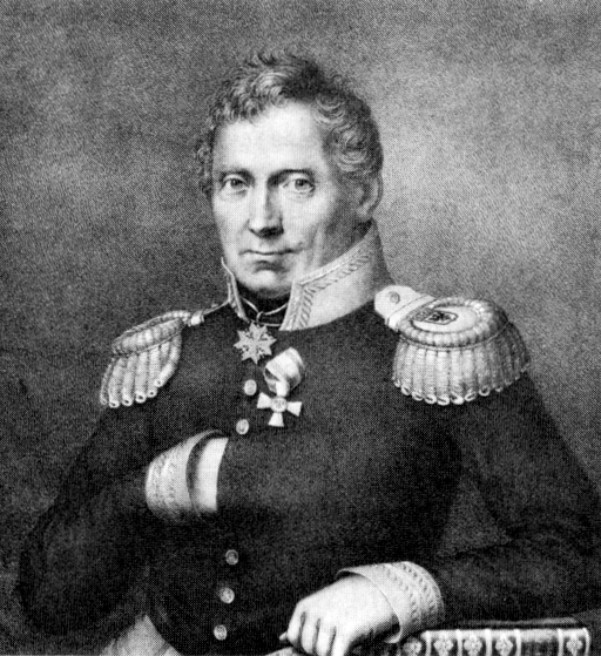
The rules developed by Reisswitz Jr. in 1824 are the most famous. Introduced as a training tool they made Kriegsspiel popular around the globe. Aiming at the detachment level with 2 minute turns, they are rather detailed and slowed down by minutiae. An English translation can be bought from Too Fat Lardies.
Guide to Kriegsspiel
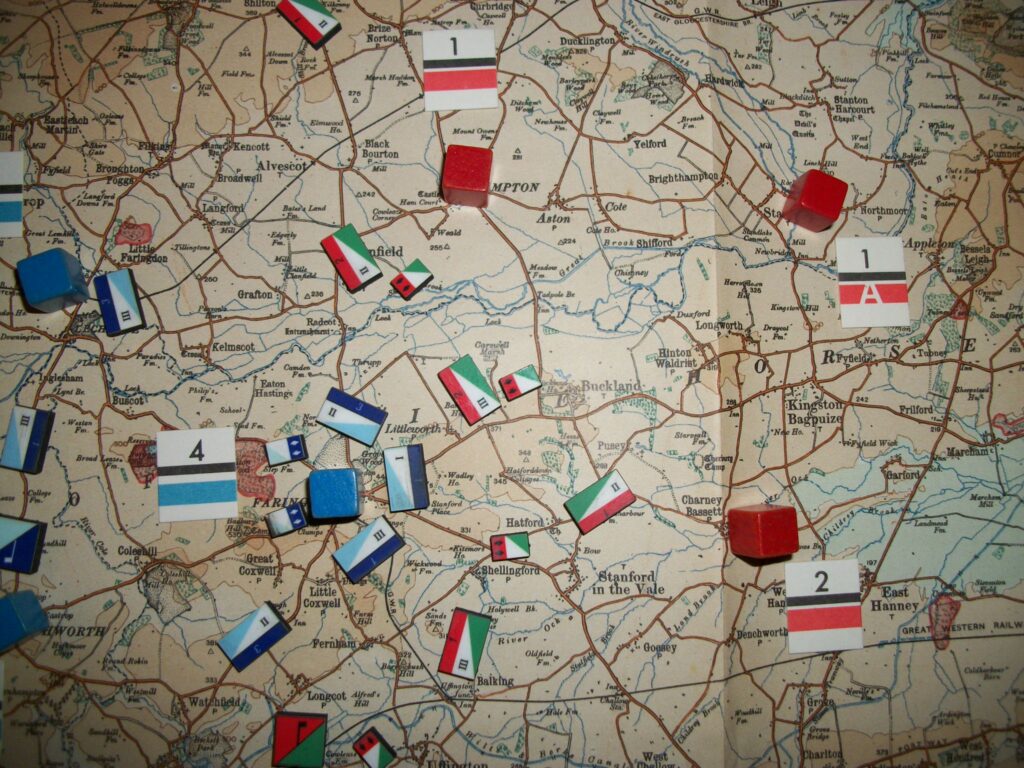
Although Kriegsspiel had always been a military training tool and a recreational game, new iterations for military use were much discussed in the 1870s. In 1871 Tschischwitz published his “Guide to Kriegsspiel” which presented a slightly more streamlined version of Reisswitz’s system.
Meckel
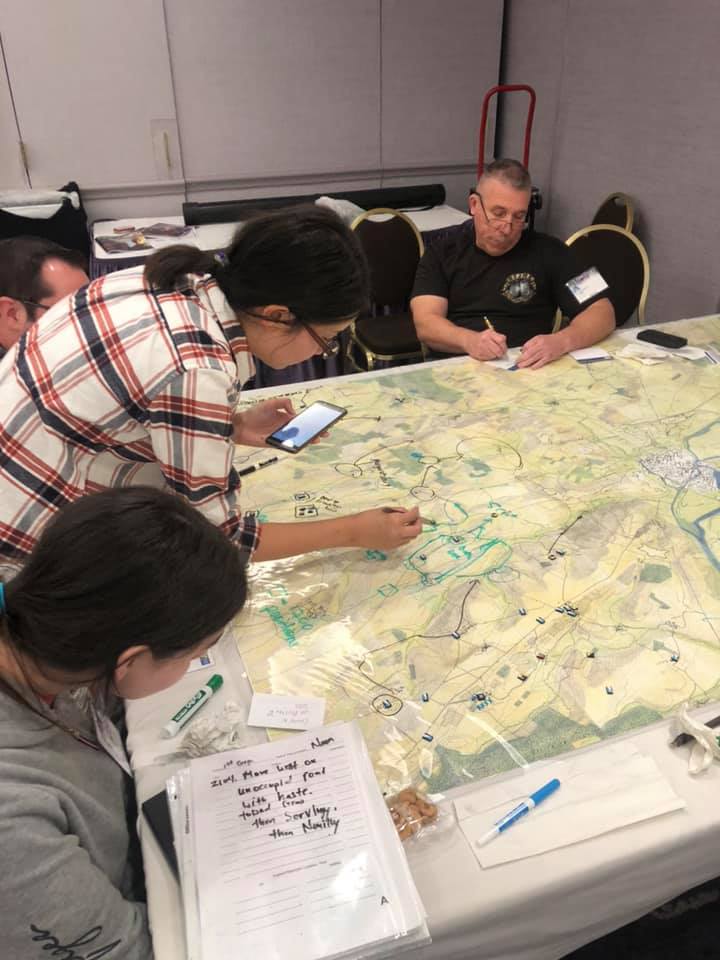
Jakob Meckel fostered the use of Kriegsspiel even more when he published his “Studies on Kriegsspiel” and several (fictional) maps specifically designed for Kriegsspiel in 1873. Meckel argued that many elements of “rigid” Kriegsspiel would prevent the usage of the game.
"Free" Kriegsspiel
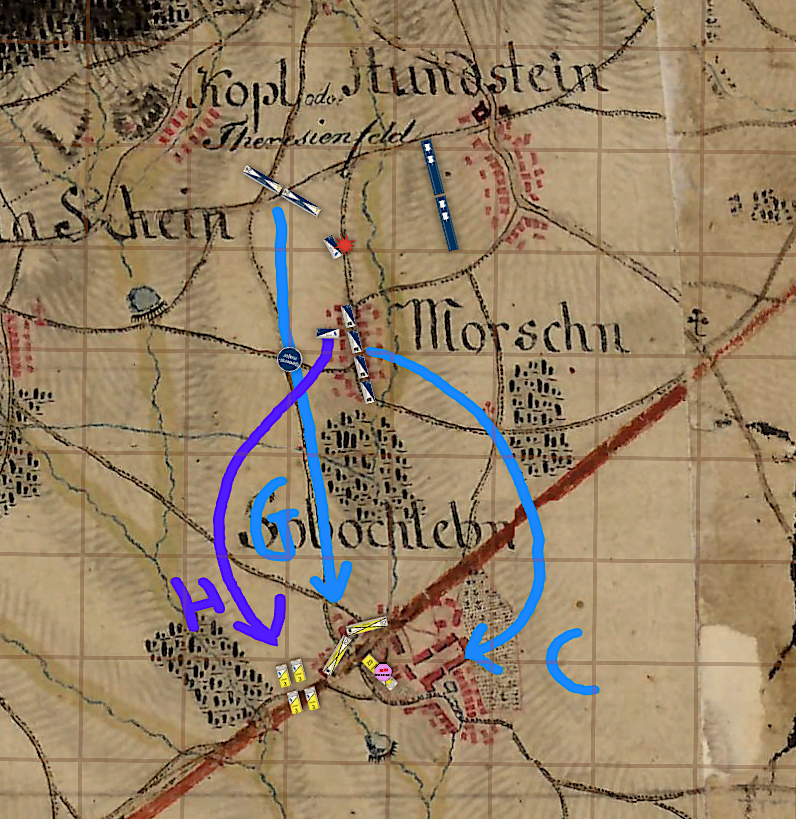
The German general Verdy du Vernois was the most famous advocate of “free” Kriegsspiel, the radical counterpart to Reisswitz’s “rigid” Kriegsspiel. Verdy argued that in order to speed up the gameplay the umpires should simply judge the outcome of a given combat situation and assign odds to roll a common d6 or no dice at all in his book from 1876.
Napoleonic Ottovski System
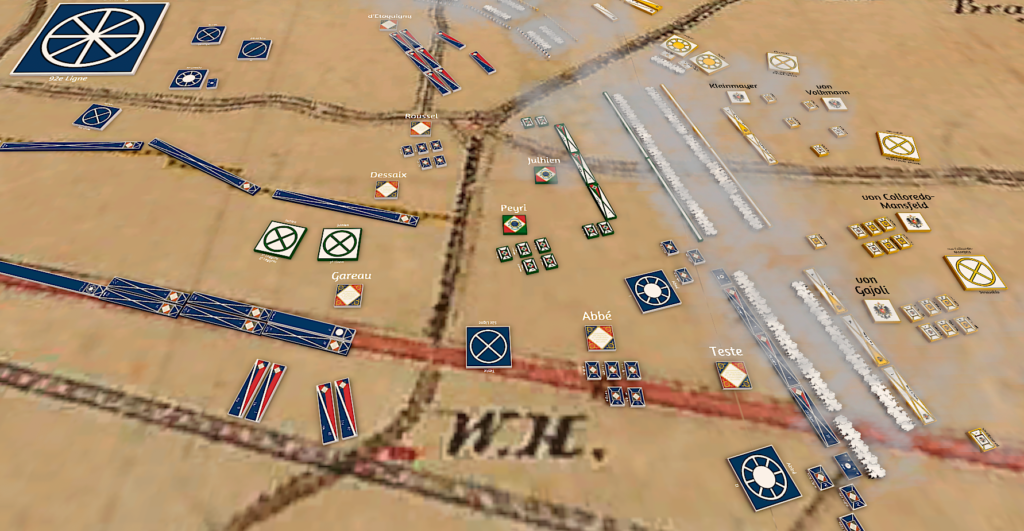
One system developed by a member of the International Kriegsspiel Society is the Napoleonic Ottovski System, designed by Otto Salo. It is focused on Napoleonic pitched battles with pieces being battalions, squadrons and batteries. Game turns represent 15 minutes. With the new 2024 update of the system, the importance of skirmishers and reserves has been heightened. The umpire’s rulebook is freely available in addition to a player guide.
Kriegsspiel 2022
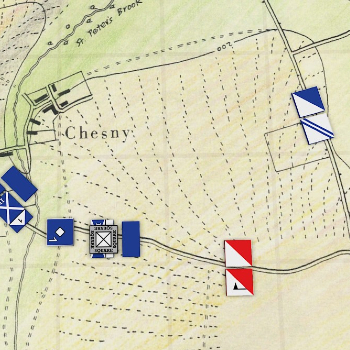
Heavily inspired by Reisswitz’s 1824 rules, the K22 System was developed by Marshall Neal of the International Kriegsspiel Society. The rules focus on detachment level (brigade to division) and represent 5 minute turns. However, they are much more streamlined for efficient play, and use specific dice to abstract combat effects compared to Reisswitz. The rules can be bought in the IKS Etsy shop.
WW2 Ottovski System
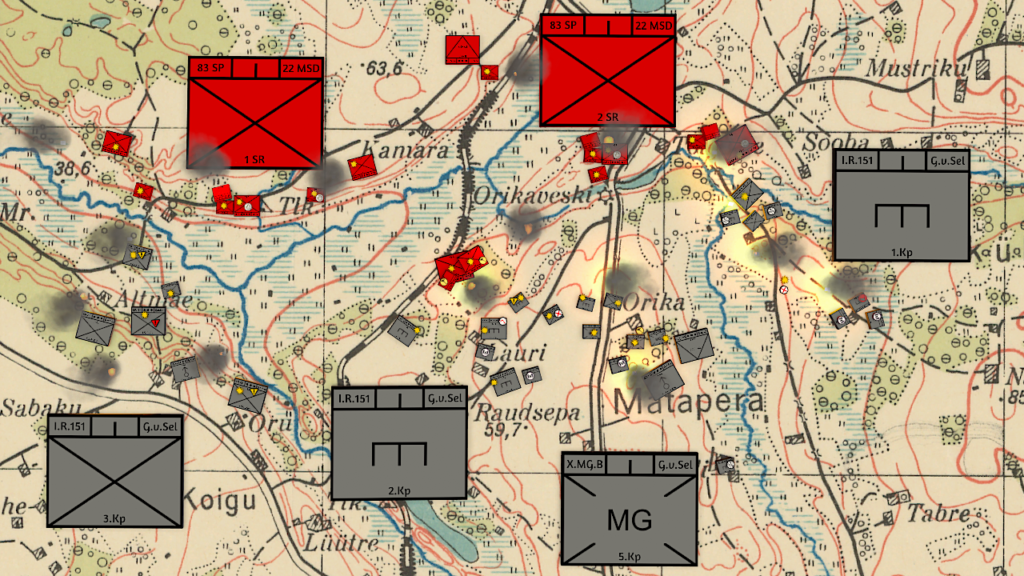
Also freely available is the WW2 Ottovski System designed by Otto, portraying company level tactical combat during the Second World War. Each block is a platoon, turns represent 15 minutes of real time fighting. Multiple levels of disruption, entrenchment and suppression add to the tactical dilemata at this scale. A new set of system specific dice handles combat resolution.
Citizen Soldiers
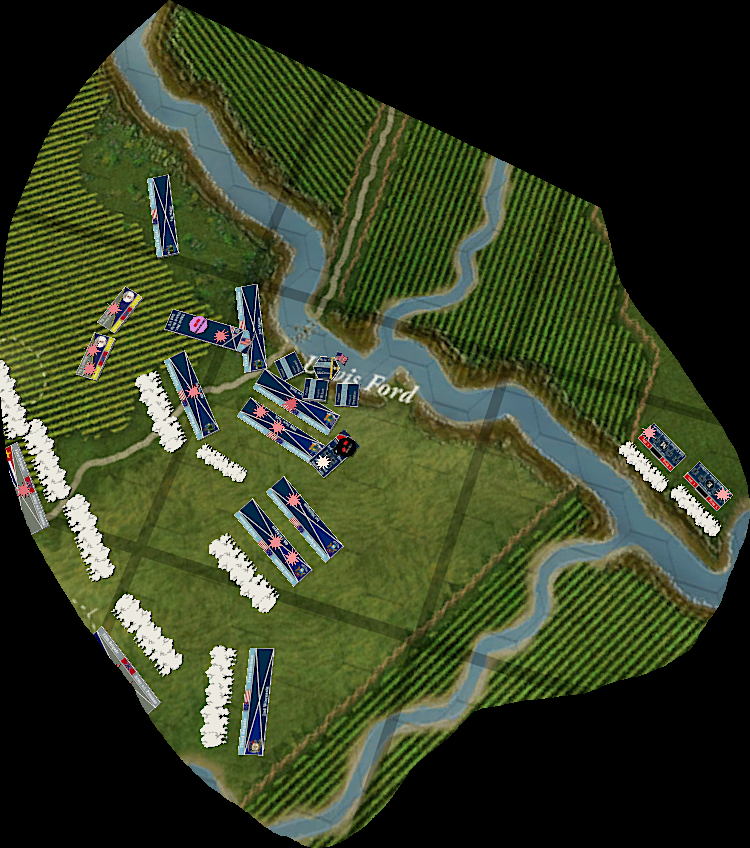
Master Umpire Carter McNish has designed his own Kriegsspiel system to run battles of the American Civil War. The system represents division-level command structures with blocks being regiments, squadrons and batteries, and features the usual 15 minute turn frequence. The document also includes a Player Guide and is available for free.
Kriegsspiel 2023

Kriegsspiel 2023 is a system for the American Civil War by Marshall Neal. With a rulebook over 75 pages long, the book also teach how to run a Kriegsspiel. K23 is a refined, streamlined, yet comprehensive ruleset that will put your players to the test in one of America’s most dramatic conflicts.
K23 is available in the IKS Etsy shop and comes with access to the Living Rules.
SoCal System

The Southern California Kriegsspiel System is an easy to learn, fast and simple ruleset for running your own Kriegsspiel games. There are just 10 original and intuitive rules, all simple, and on one single page.
Of course, the rulebook is packed with a lot more value than that! The full rulebook has 46 pages with informative and useful content that will teach you how to run your own games.
It will also teach you what things to know and watch out for, so your games will run smoothly and efficiently. A two-player modification to the rules is also suggested to allow you to play without a dedicated umpire.
Join our Discord server and become part of a growing community of over 2,000 members from all around the globe.
Get in touch either on Discord or via e-mail, leave us some feedback or suggestions or ask us anything about Kriegsspiel.
The IKS is commited to ensure inclusiveness and diversity within the community and stands against discrimination and harassment.
We endorse the Derby House Principles.




